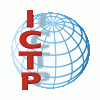
"[A]n investigation of the use of open access by researchers from developing countries... show[s] that open access journals are not characterised by a different composition of authors than the traditional toll access journals... [A]uthors from developing countries do not cite open access more than authors from developed countries... [A]uthors from developing countries are not more attracted to open access than authors from developed countries. [underscoring added]"(Frandsen 2009, J. Doc. 65(1))
(See also "Open Access: No Benefit for Poor Scientists")
Open Access is
not the same thing as Open Access Journals.
Articles published in conventional non-Open-Access journals can also be made Open Access (OA) by their authors -- by
self-archiving them in their own
Institutional Repositories.
The
Frandsen study focused on OA journals, not on OA articles. It is problematic to compare OA and non-OA journals, because journals differ in quality and content, and OA journals tend to be newer and fewer than non-OA journals (and often not at the top of the quality hierarchy).
Some studies have reported that OA journals are cited more, but because of the problem of equating journals, these findings are limited. In contrast,
most studies that have compared OA and non-OA
articles within the same journal and year have found a significant citation advantage for OA. It is highly unlikely that this is only a developed-world effect; indeed it is almost certain that a goodly portion of OA's enhanced access, usage and impact comes from developing-world users.
It is unsurprising that developing world authors are hesitant about publishing in OA journals, as they are the least able to pay author/institution publishing fees (if any). It is also unsurprising that there is no significant shift in citations toward OA journals in preference to non-OA journals (whether in the developing or developed world): Accessibility is a
necessary -- not a
sufficient -- condition for usage and citation: The other necessary condition is
quality. Hence it was to be expected that the OA Advantage would affect the top quality research most. That's where the proportion of OA journals is lowest.
The
Seglen effect ("skewness of science") is that the top 20% of articles tend to receive 80% of the citations. This is why the OA Advantage is more detectable by comparing OA and non-OA articles within the same journal, rather than by comparing OA and non-OA journals.
We will soon be reporting results showing that the within-journal OA Advantage is higher in "higher-impact" (i.e., more cited) journals. Although citations are not identical with quality, they do correlate with quality (when comparing like with like). So an easy way to understand the OA Advantage is as a
quality advantage -- with OA "levelling the playing field" by allowing authors to select which papers to cite on the basis of their quality, unconstrained by their accessibility. This effect should be especially strong in the developing world, where access-deprivation is greatest.
Leslie Chan -- "Associate Director of Bioline International, co-signatory of the Budapest Open Access Initiative, supervisor in the new media and international studies programs at the University of Toronto, and tireless champion for the needs of the developing world" (Poynder 2008) -- has added the following in the American Scientist Open Access Forum:I concur with Stevan's comments, and would like to add the following:
1. From our perspective, OA is as much about the flow of knowledge from the South to the North as much as the traditional concern with access to literature from the North. So the question to ask is whether with OA, authors from the North are starting to cite authors from the South. This is a study we are planning. We already have good evidence that more authors from the North are publishing in OA journals in the South (already an interesting reversal) but we need a more careful analysis of the citation data.
2. The more critical issue regarding OA and developing country scientists is that most of those who publish in "international" journals cannot access their own publications. This is where open repositories are crucial, to provide access to research from the South that is otherwise inaccessible.
3. The Frandsen study focuses on biology journals and I am not sure what percentage of them are available to DC researchers through HINARI/AGORA. This would explain why researchers in this area would not need to rely on OA materials as much. But HINARI etc. are not OA programs, and local researchers will be left with nothing when the programs are terminated. OA is the only sustainable way to build local research capacity in the long term.
4. Norris et. al's (2008) "Open access citation rates and developing countries" focuses instead on Mathematics, a field not covered by HINARI and they conclude that "the majority of citations were given by Americans to Americans, but the admittedly small number of citations from authors in developing countries do seem to show a higher proportion of citations given to OA articles than is the case for citations from developed countries. Some of the evidence for this conclusion is, however, mixed, with some of the data pointing toward a more complex picture of citation behaviour."
5. Citation behaviour is complex indeed and more studies on OA's impact in the developing world are clearly needed. Davis's eagerness to pronounce that there is "No Benefit for Poor Scientists" based on one study is highly premature.
If there should be a study showing that people in developing countries prefer imported bottled water over local drinking water, should efforts to ensure clean water supplies locally be questioned?
Leslie Chan
Stevan Harnad
American Scientist Open Access Forum




